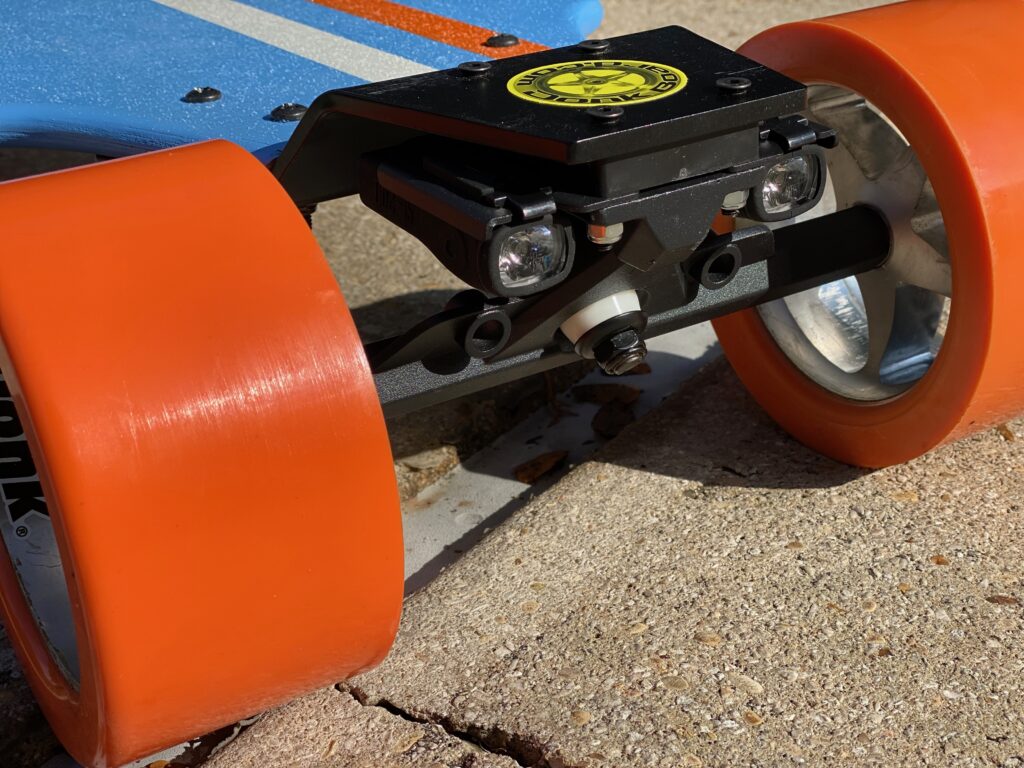For anyone stepping into the world of boardsports, one question always comes up first: what’s the difference between a longboard and a skateboard? Though they share a similar shape and purpose — rolling on four wheels — these two boards are designed for very different experiences.
Whether you’re cruising down a hill, commuting to work, or perfecting tricks at the skatepark, understanding the difference between longboard and skateboard setups is crucial. Each board offers a distinct ride feel, speed profile, and purpose-built design.
This guide breaks down the five key differences between a longboard and a skateboard, helping you decide which board best suits your lifestyle and riding goals.
- Deck Design and Shape
The deck — the flat platform you stand on — defines much of how a board rides. The design, shape, and length directly affect balance, maneuverability, and performance.
Deck Length
The most obvious difference is size.
- Skateboards typically measure between 28–33 inches in length.
- Longboards are noticeably longer, ranging from 33–60 inches, sometimes even more depending on the style.
This extra length gives longboards superior stability, making them ideal for cruising and downhill riding, while skateboards remain compact and responsive for tricks.
Deck Shape
Skateboards feature concave decks with kicktails — raised ends that allow riders to perform tricks like ollies, flips, and grinds.
Longboards, on the other hand, have a flatter profile, sometimes with a mild concave for comfort and control during long rides.
Common longboard deck shapes include:
- Pintail: Narrow ends, perfect for carving and smooth cruising.
- Drop-through: Trucks mounted through the deck for lower center of gravity and stability.
- Double drop: Even lower ride height for maximum speed and control in downhill races.
According to Warehouse Skateboards, longboards are designed for flow and comfort, while skateboards prioritize agility and pop — the upward snap required for tricks.
Flex and Material
Longboards often have more flex, using materials like bamboo or fiberglass for smooth shock absorption.
Skateboards are typically made from 7-ply maple wood, which is stiffer and provides the solid “snap” needed for tricks.
Example: The Loaded Tan Tien longboard deck is known for its flexible bamboo construction, while the Powell Peralta Flight Deck offers stiff precision ideal for technical skateboarding.
- Wheel Size and Hardness
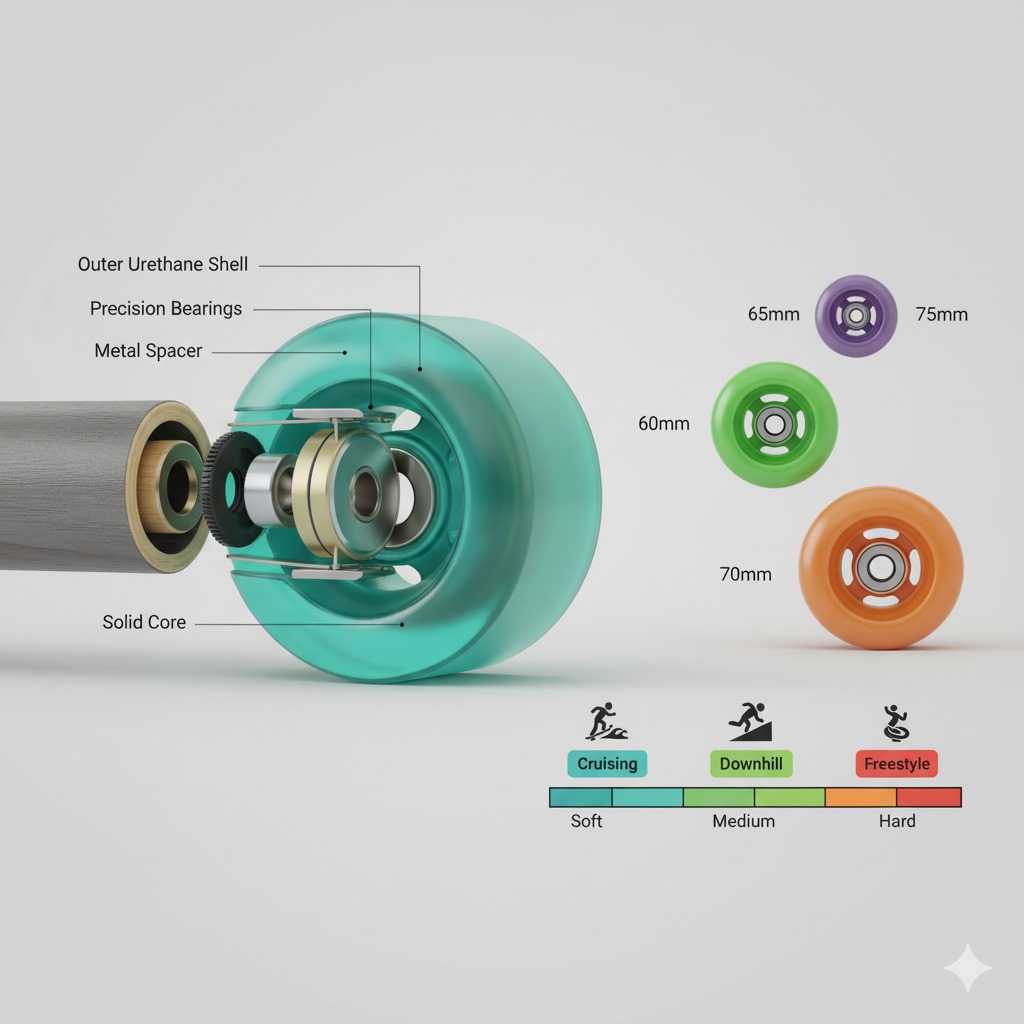
One of the most defining differences between a longboard and skateboard lies in the wheels. They determine how your ride feels — from speed and grip to comfort and control.
Wheel Size
- Skateboards: Smaller wheels, typically 50–60mm in diameter.
- These wheels are best for smooth surfaces like skateparks or ramps.
- They accelerate quickly but have lower top speeds.
- Longboards: Larger wheels, ranging from 65–85mm.
- They roll faster, handle cracks and pebbles with ease, and maintain stability even at high speed.
- Perfect for cruising, downhill, and rough surfaces.
This makes longboards feel like “surfing on land,” while skateboards feel like “gymnastics on wheels.”
According to Tactics Boardshop, larger longboard wheels offer smoother rides over imperfections, while small skateboard wheels allow precision and quick control in skateparks.
Wheel Hardness (Durometer)
- Skateboards: Harder wheels (95A–101A+) for quick response and easy slides on smooth concrete.
- Longboards: Softer wheels (75A–85A) for grip and shock absorption, ideal for uneven terrain.
Softer wheels grip better on hills, while harder wheels spin faster on ramps — each optimized for its terrain.
Example: Orangatang In Heat 77A wheels deliver a buttery, smooth roll on rough streets, while Spitfire Formula Four 99A wheels provide the crisp slide control skateboarders crave.
Contact Patch
The contact patch (the area of the wheel touching the ground) is wider on longboards for stability, and narrower on skateboards for speed and agility.
In short:
- Longboard wheels = comfort + control.
- Skateboard wheels = precision + performance.
- Trucks and Turning Radius
The trucks (the metal T-shaped parts attaching wheels to the deck) differ significantly between longboards and skateboards. They influence how easily a board turns, carves, or grinds.
Truck Width
- Skateboard trucks are narrower and align closely with the deck’s width for balance during tricks.
- Longboard trucks are wider (typically 150–180mm) to provide stability and smooth carving.
Truck Geometry
Longboard trucks use reverse kingpin (RKP) designs, where the kingpin (central bolt) faces outward. This setup increases turning radius and responsiveness, making carving more fluid.
Skateboards use traditional kingpin (TKP) trucks, where the kingpin faces inward. This configuration offers tight turns and stability during tricks and grinds.
As Stoked Ride Shop explains, reverse kingpin trucks are more “surf-like,” ideal for carving and cruising, while traditional kingpins are compact and trick-oriented.
Ride Height
Longboards often feature drop-through decks or drop mounts, lowering the center of gravity for better stability at speed.
Skateboards, in contrast, have top-mounted trucks, which keep the deck higher but make it easier to pop tricks.
Turning Feel
- Longboards: Smooth, wide, and predictable turns — excellent for carving hills or long pathways.
- Skateboards: Quick, snappy turns — ideal for ramps and technical maneuvers.
Example: Paris V3 Reverse Kingpin Trucks are a favorite among cruisers, while Independent Stage 11 Trucks dominate in the skatepark world.
- Riding Style and Performance
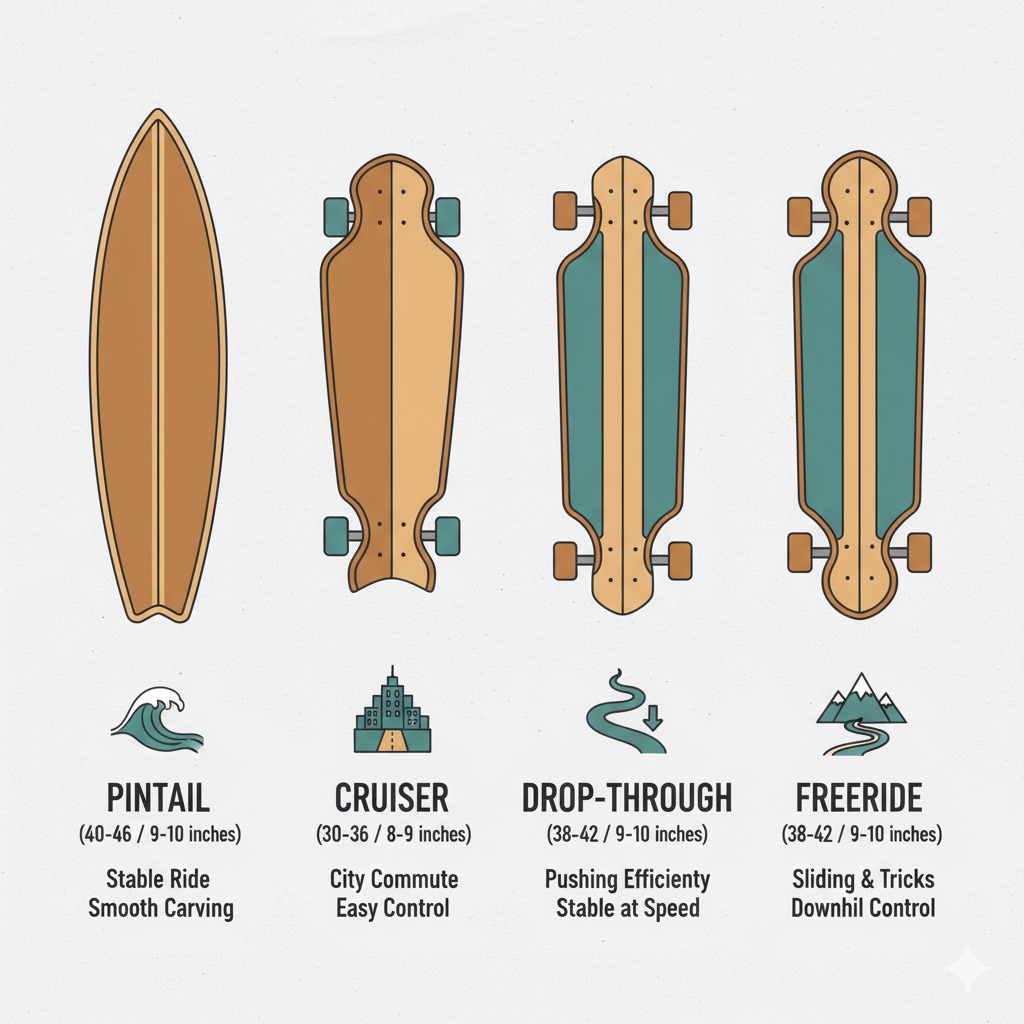
The true difference between longboard and skateboard becomes clear in how they ride and perform. Each board serves a different purpose, tailored to specific styles and experiences.
- Cruising and Commuting
Longboards excel at cruising and commuting. Their large wheels, longer decks, and smoother feel make them perfect for long distances or urban travel.
Skateboards can be used for short commutes but aren’t as comfortable for extended rides due to their small, hard wheels.
If your goal is to glide smoothly across campus or along a beach boardwalk, a longboard will outperform every time.
- Tricks and Skatepark Riding
Skateboards dominate when it comes to tricks. Their smaller decks and lighter weight allow riders to perform ollies, kickflips, grinds, and aerial maneuvers with precision.
Longboards, due to their size and flexibility, aren’t suited for complex tricks. However, certain longboarders practice freestyle or dancing, focusing on fluid steps and body movement rather than flips.
Example: Powell Peralta’s classic street decks are built for pop and control, while Loaded Bhangra longboards cater to riders who love rhythm and flow.
- Downhill and Speed Riding
Longboards are engineered for downhill racing. Their large, soft wheels, aerodynamic decks, and low center of gravity deliver speed and stability at 40+ mph.
Skateboards, while agile, become unstable at high speeds and are better suited for flat-ground or park use.
According to Concrete Wave Magazine, downhill longboarding has evolved into a discipline of precision — with specialized boards designed for aerodynamics, wheel traction, and safety.
- Freeride and Sliding
Longboards excel at freeride sliding — drifting sideways down hills at speed.
Their softer wheels and longer decks make slides controlled and predictable. Skateboards can slide, but the technique is different and often less stable.
- Fitness and Lifestyle
Longboarding has a growing reputation as a fitness activity — it strengthens core muscles and improves balance. Skateboarding leans more toward performance, creativity, and expression through tricks and street riding.
- Speed, Stability, and Safety
Perhaps the most important difference between a longboard and skateboard is how they handle speed and stability.
Speed
Longboards are built for speed.
- Their larger wheels maintain momentum and roll efficiently over distance.
- Aerodynamic deck shapes reduce drag.
- Lower center of gravity enhances control.
In contrast, skateboards are faster in short bursts but slower overall due to smaller wheels and higher resistance on rough terrain.
Example: A downhill longboard like the Landyachtz Evo 40 can easily hit speeds of 45 mph, while a traditional street skateboard is optimized for quick, controlled bursts in skateparks.
-
Sale!

4-Inch High Wheels
$160.00Original price was: $160.00.$149.00Current price is: $149.00. Add to cart -
Sale!
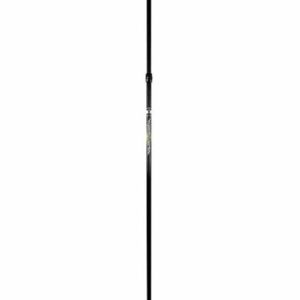
Donk Land paddle
$145.00Original price was: $145.00.$135.00Current price is: $135.00. Add to cart -
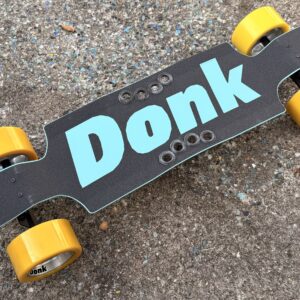
DonkBoard Aluminum
$500.00 Add to cart -
Sale!
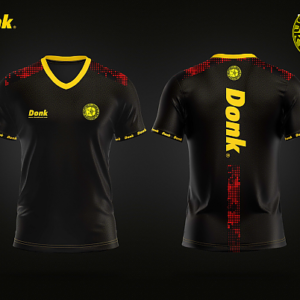
The Carrum
$99.99Original price was: $99.99.$75.00Current price is: $75.00. Add to cart -
Sale!
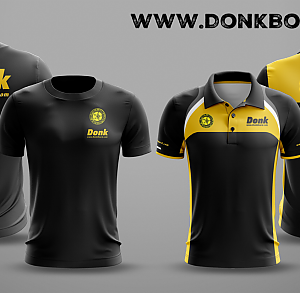
The Courtly
$130.00Original price was: $130.00.$100.00Current price is: $100.00. Add to cart -
Sale!

The Nostalga
$139.99Original price was: $139.99.$125.00Current price is: $125.00. Add to cart -
Sale!

Wood DonkBoard: Ghost White, Bamboo and Joker Purple
$220.00Original price was: $220.00.$199.00Current price is: $199.00. Add to cart
Stability
Longboards win hands down when it comes to stability. Their extended wheelbase and wide trucks create a smooth, predictable ride — perfect for beginners or long-distance riders.
Skateboards are inherently less stable at speed but excel in precision and balance, which is vital for tricks.
Safety
Because longboards are more stable and forgiving, they’re generally safer for beginners.
Skateboards require precise control and practice to master. The risk of falls is higher, especially when attempting tricks.
According to Skateboard Safety Foundation, longboards reduce impact shocks and are preferred for riders who value comfort and gradual learning curves.
Bonus: Longboard vs. Skateboard — At a Glance
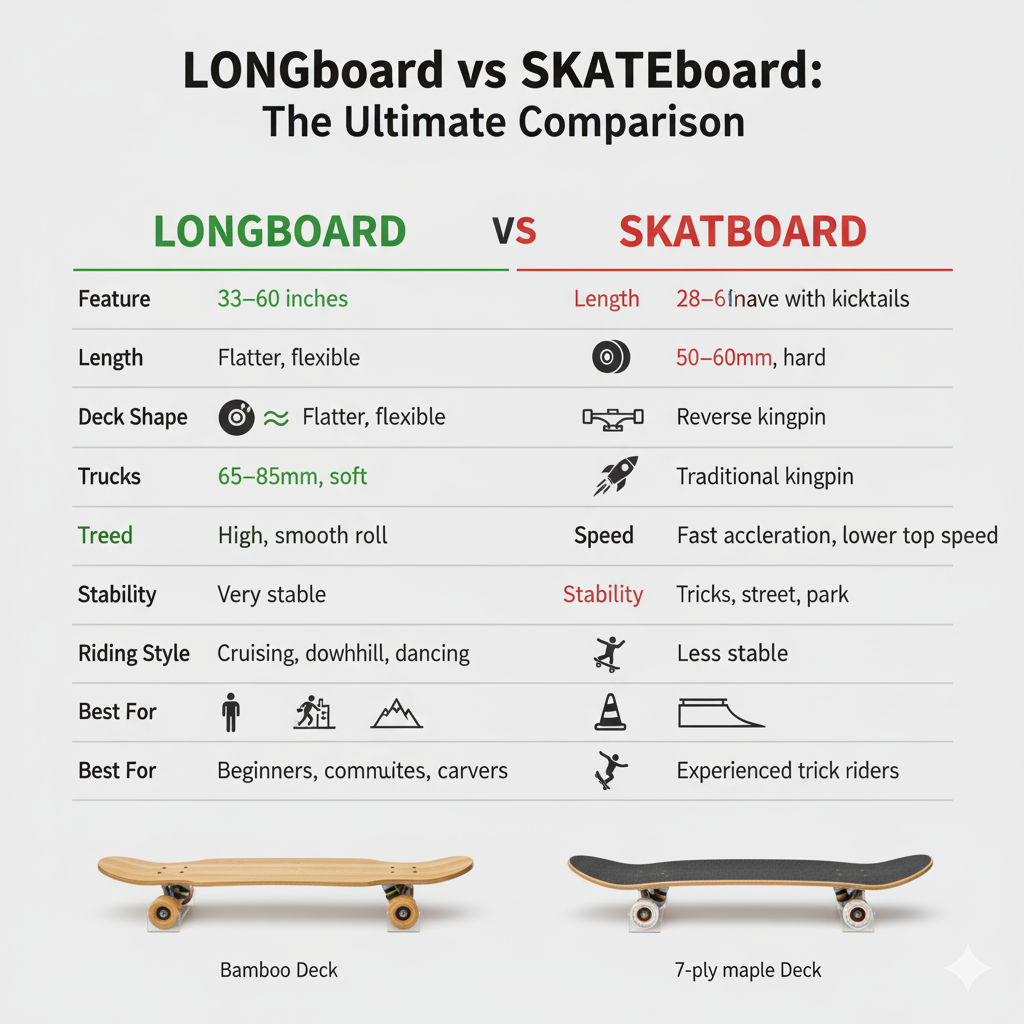
| Feature | Longboard | Skateboard |
| Length | 33–60 inches | 28–33 inches |
| Deck Shape | Flatter, flexible | Concave with kicktails |
| Wheel Size | 65–85mm, soft | 50–60mm, hard |
| Trucks | Reverse kingpin | Traditional kingpin |
| Speed | High, smooth roll | Fast acceleration, lower top speed |
| Stability | Very stable | Less stable |
| Riding Style | Cruising, downhill, dancing | Tricks, street, park |
| Best For | Beginners, commuters, carvers | Experienced trick riders |
Which Should You Choose?
If you’re deciding between a longboard and skateboard, think about your goals:
- Choose a Longboard if you want comfort, distance, and flow. Ideal for cruising, carving, or downhill.
- Choose a Skateboard if you want tricks, ramps, and technical control. Ideal for street or park riding.
Your choice isn’t about which board is better — it’s about what kind of rider you want to be.
As SkateHut points out, both boards share a foundation of balance, creativity, and freedom. The right one simply fits your preferred style.
Conclusion
The difference between longboard and skateboard comes down to purpose. Longboards are built for smooth rides, speed, and stability. Skateboards are crafted for tricks, agility, and creative performance.
If you’re new to boarding and want something easy to learn, a longboard is your best friend — it’s forgiving, steady, and fun to cruise on. But if you crave adrenaline, tricks, and the sharp rhythm of skate culture, a skateboard is the way to go.
Ultimately, both represent freedom on four wheels — one prioritizes flow, the other precision. The best way to understand their differences is simple: try both.
Once you’ve felt the glide of a longboard and the pop of a skateboard, you’ll know exactly which one matches your spirit.

